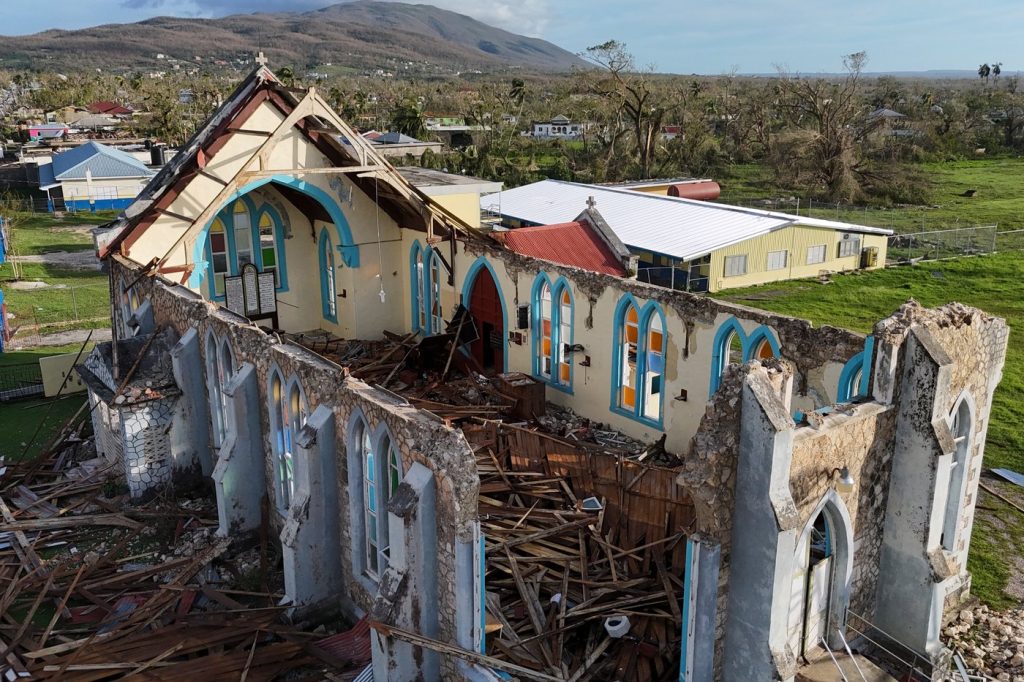SANTIAGO DE CUBA, Cuba (AP) — Residents across the northern Caribbean faced the aftermath of Hurricane Melissa on Thursday, as the death toll from the devastating storm climbed. Recovery efforts were underway in Jamaica, where large machinery and chainsaws were utilized to clear roads and access remote communities severely impacted by one of the strongest Atlantic storms in history.
In the southern parish of St. Elizabeth, resident Sylvester Guthrie expressed his despair, stating, “I don’t have a house now,” while clutching his bicycle, the only valuable left after the storm. He mentioned having land elsewhere to rebuild but emphasized the need for assistance. Emergency relief flights commenced at Jamaica's main international airport—reopened late Wednesday—as authorities distributed water, food, and other essential supplies.
Jamaican Transportation Minister Daryl Vaz described the scale of devastation as “enormous.” The storm resulted in widespread destruction in Black River, where Prime Minister Andrew Holness reported that up to 90% of roofs were lost. Many residents, like Sheryl Smith, found themselves homeless. “I am now homeless, but I have to be hopeful because I have life,” she stated after losing her roof. Authorities reported at least four fatalities and significant flooding impacting the island.
In Haiti, Hurricane Melissa caused catastrophic flooding, leading to at least 25 fatalities and 18 individuals reported missing, primarily in the southern part of the country. Steven Guadard from Petit-Goâve tragically recounted losing his entire family to the storm, which claimed 20 lives in the town, including 10 children. Haiti's Civil Protection Agency noted extensive damage, with more than 160 homes affected and around 11,600 individuals seeking refuge in shelters.
Meanwhile, the recovery efforts in Cuba involved clearing blocked roads with heavy machinery, and military assistance was mobilized to rescue individuals stranded in isolated areas. Fortunately, no fatalities were reported in Cuba, as over 735,000 people were evacuated prior to the storm's impact. Residents began returning to their homes, where they faced extensive damage, particularly in Santiago de Cuba and surrounding provinces such as Granma, Holguín, Guantánamo, and Las Tunas.
Yaima Almenares, a physical education teacher, remarked on the community effort to restore normalcy, stating, “We are cleaning the streets, clearing the way.” Despite the damage, officials pointed out that the rains may prove beneficial for reservoir levels and alleviating a severe drought affecting eastern Cuba. However, many areas were still without power, internet, and telephone services due to downed infrastructure.
Hurricane Melissa reached landfall in Jamaica as a Category 5 hurricane with wind speeds of 185 mph (295 kph), tying records for Atlantic storms. When it hit eastern Cuba, it was downgraded to a Category 3 hurricane. As of late Wednesday, a hurricane warning was still active for the southeastern and central Bahamas, with numerous evacuations in progress.
Moving into Thursday evening, Melissa was classified as a Category 2 storm with sustained winds of about 100 mph (155 kph). The storm was situated approximately 105 miles (170 kilometers) east-northeast of the central Bahamas, with forecasts indicating a potential for further strengthening before gradually weakening.










